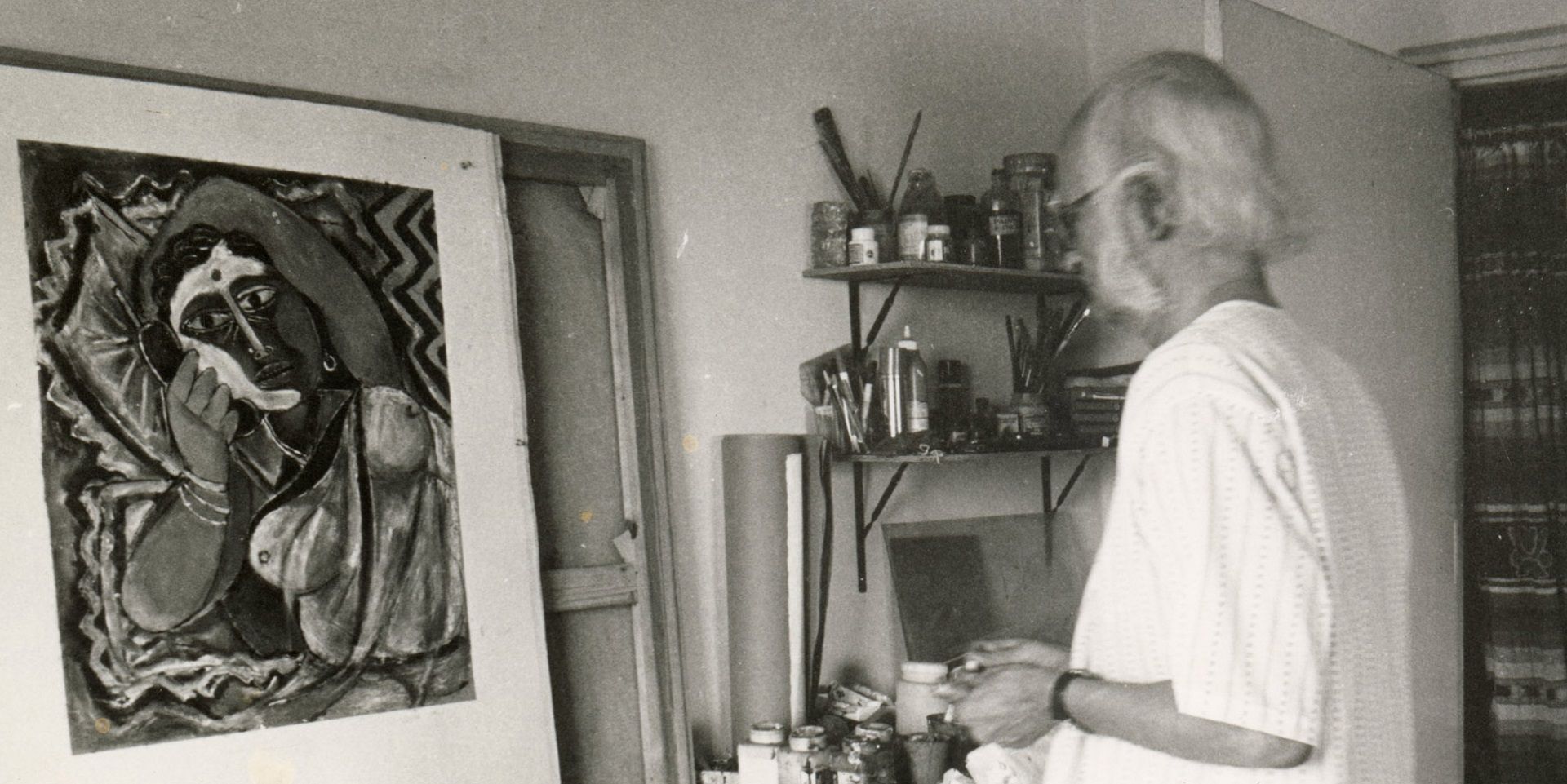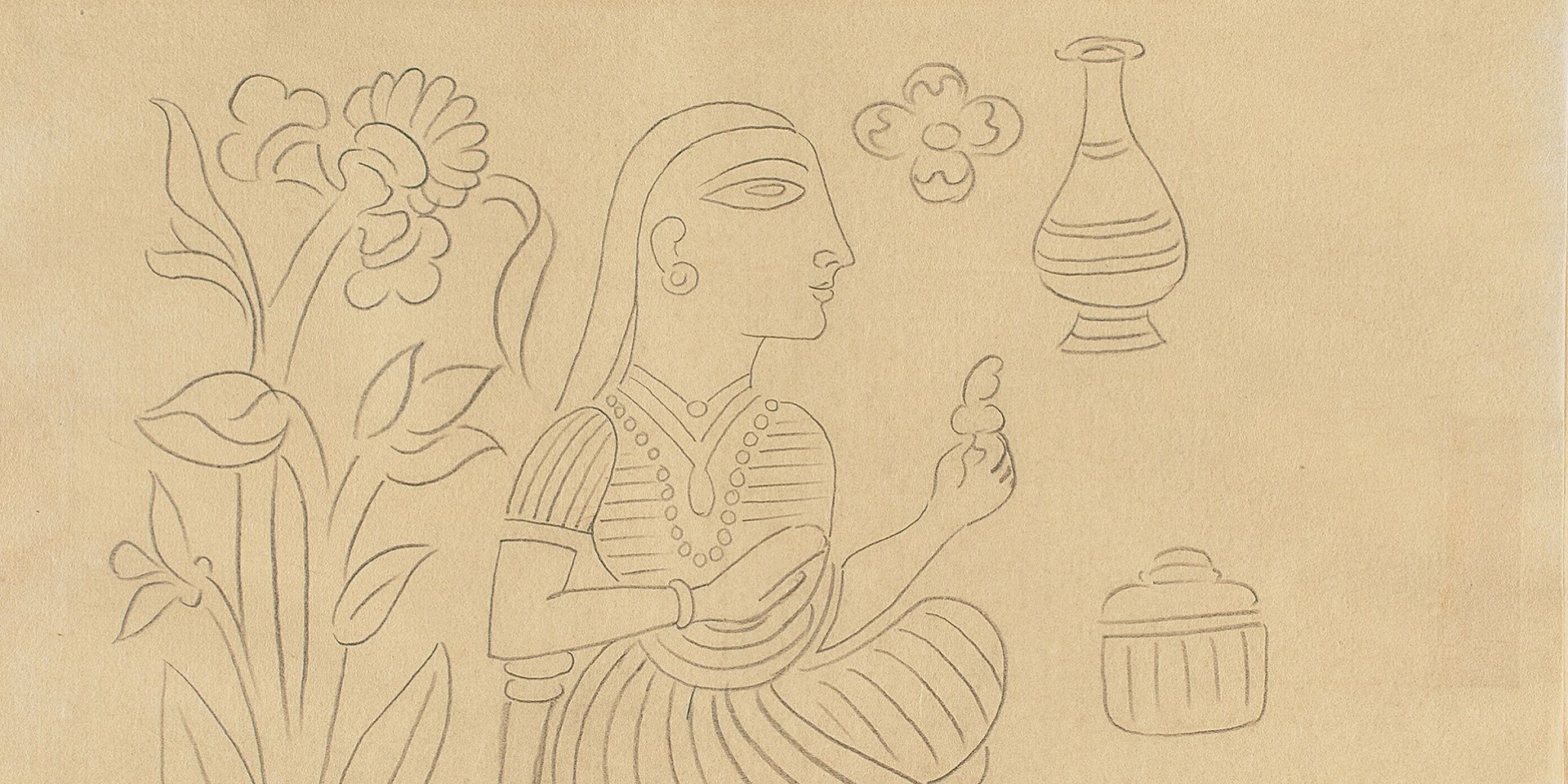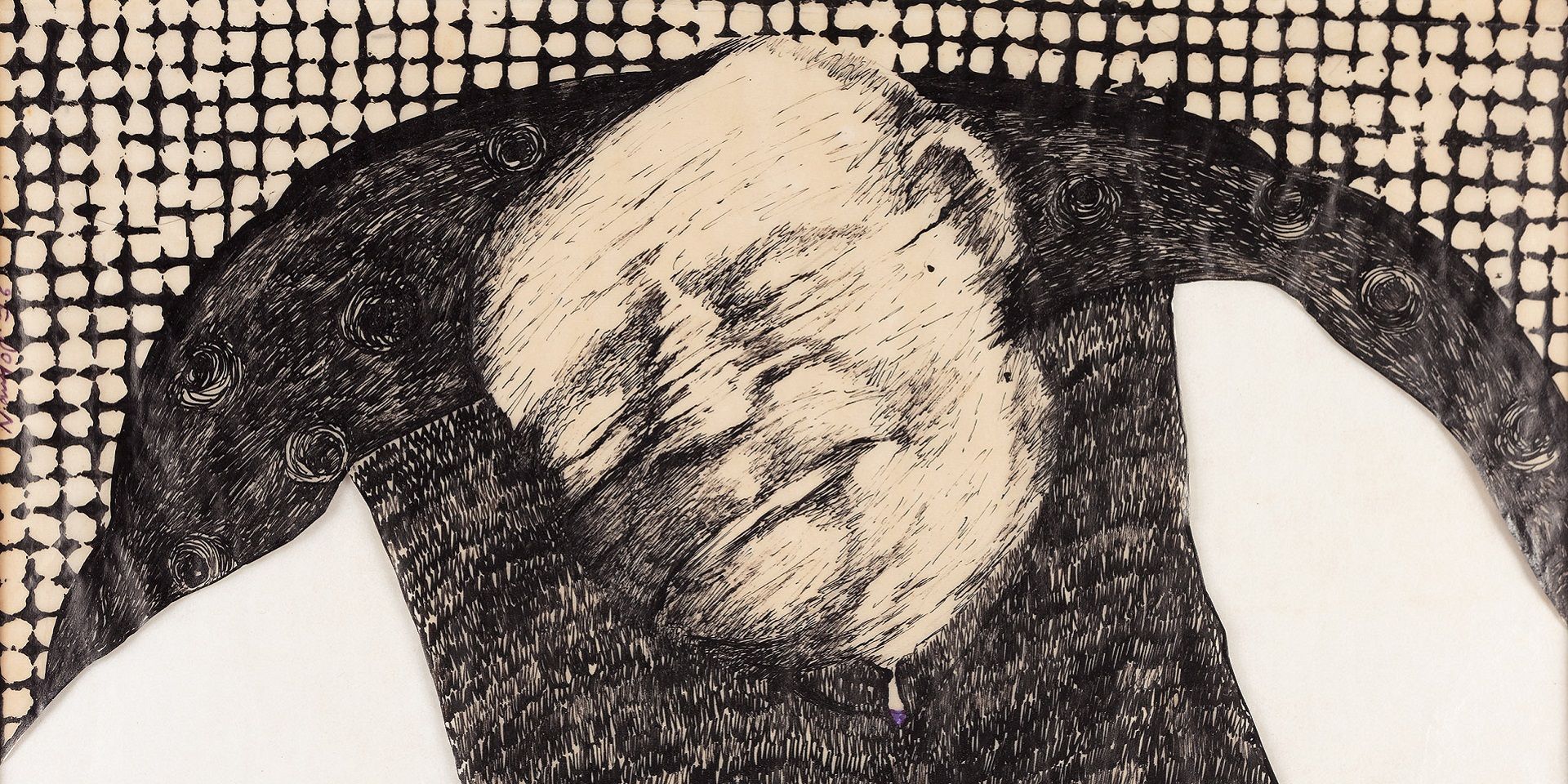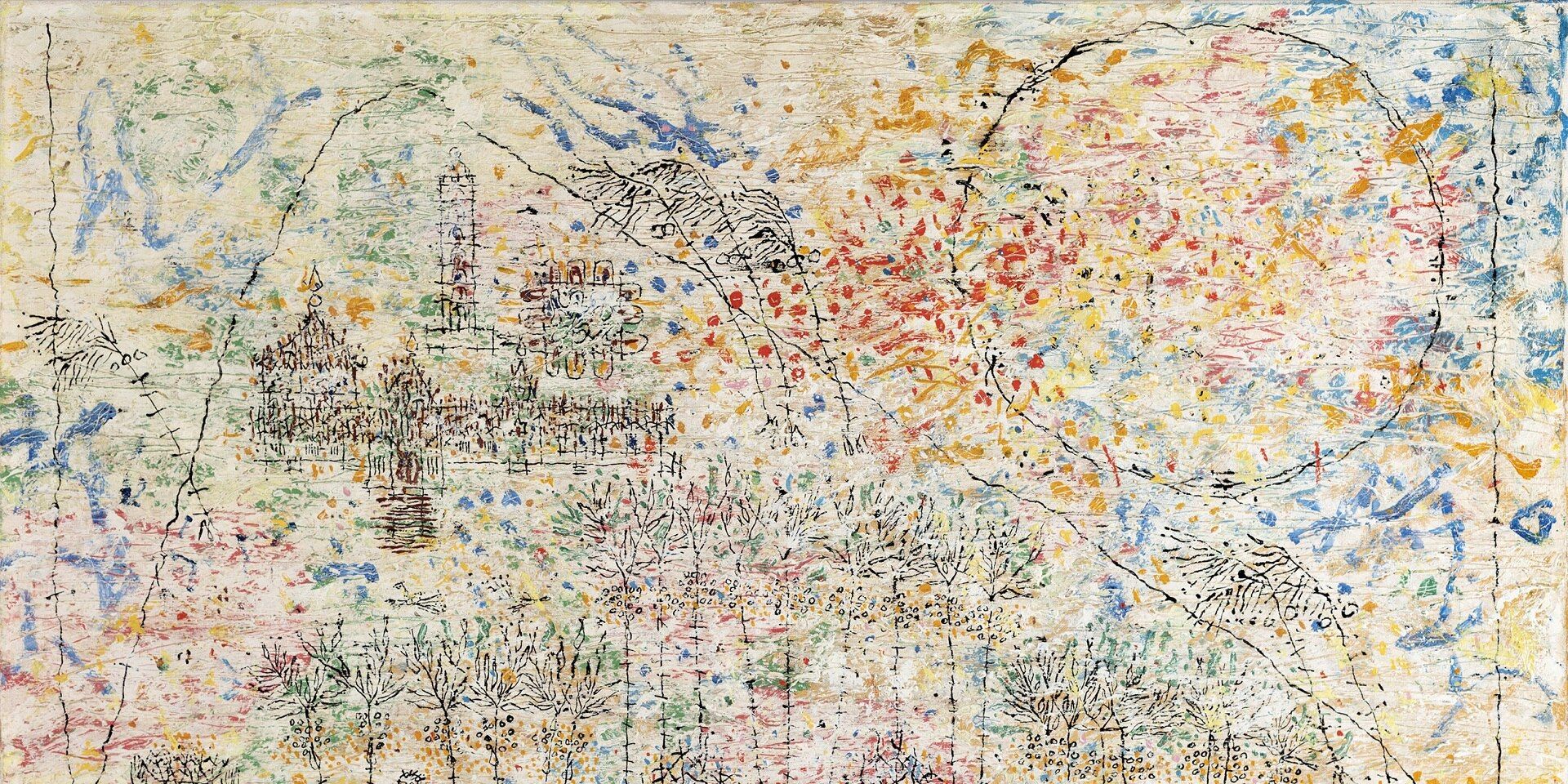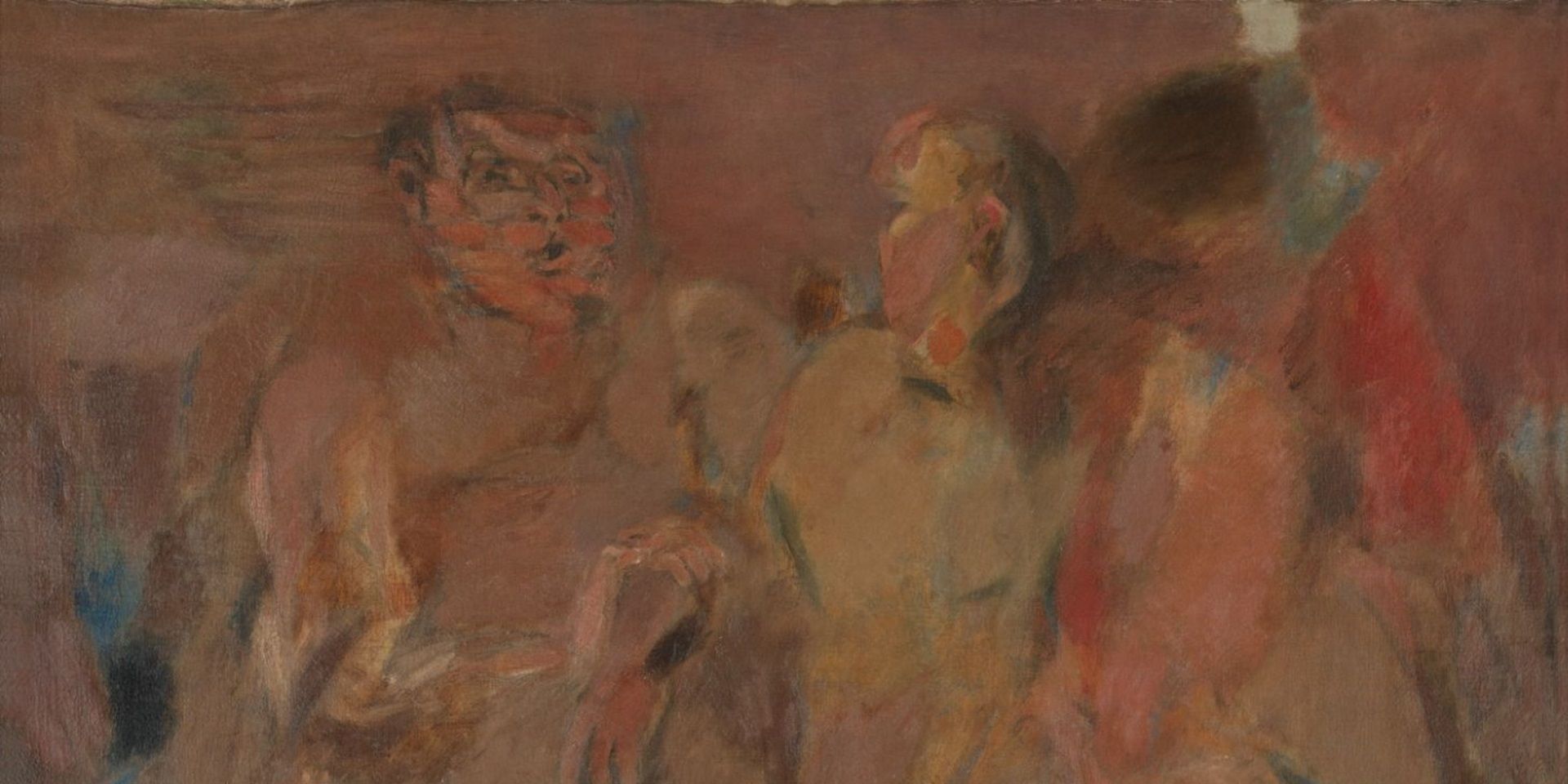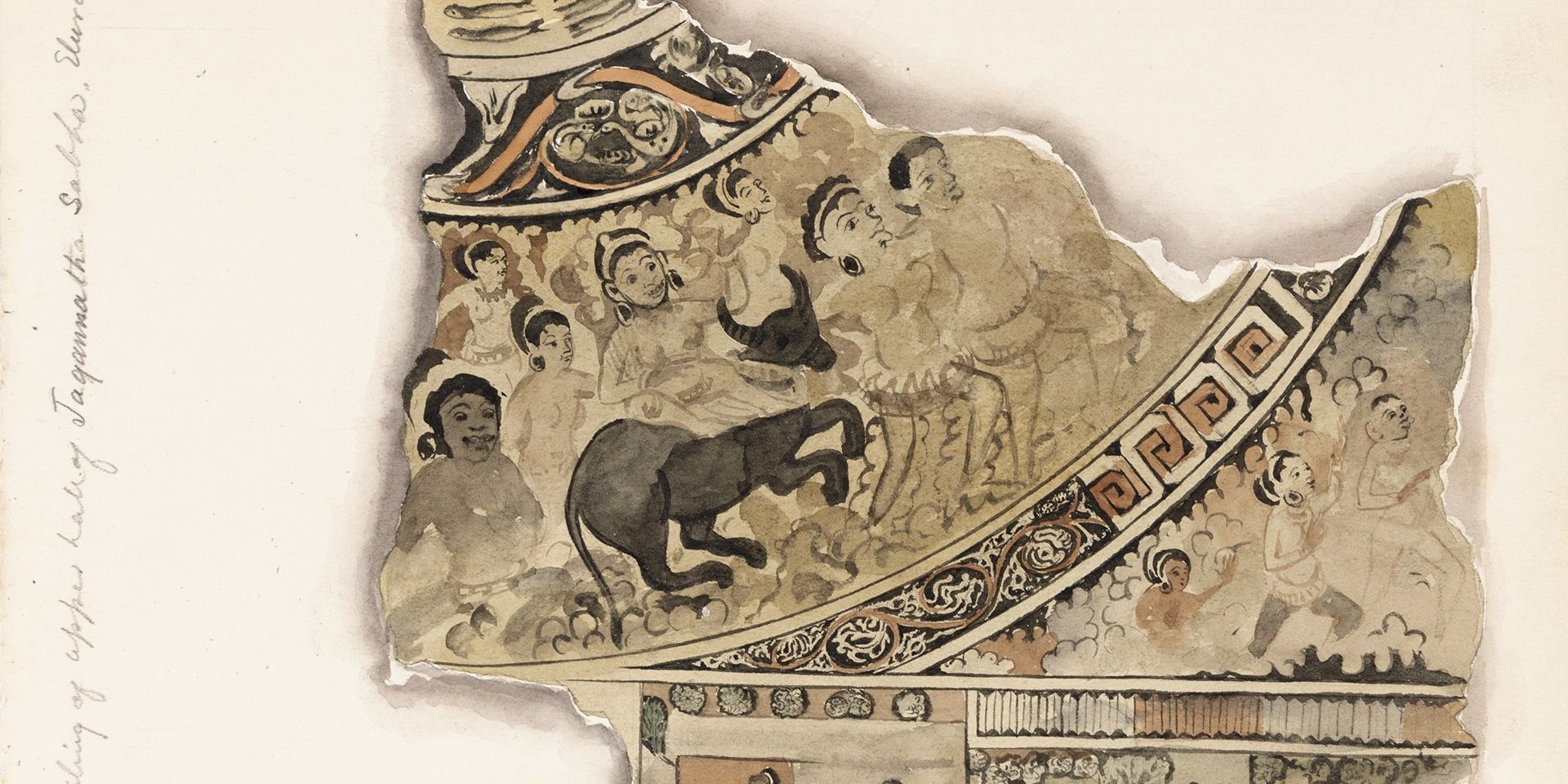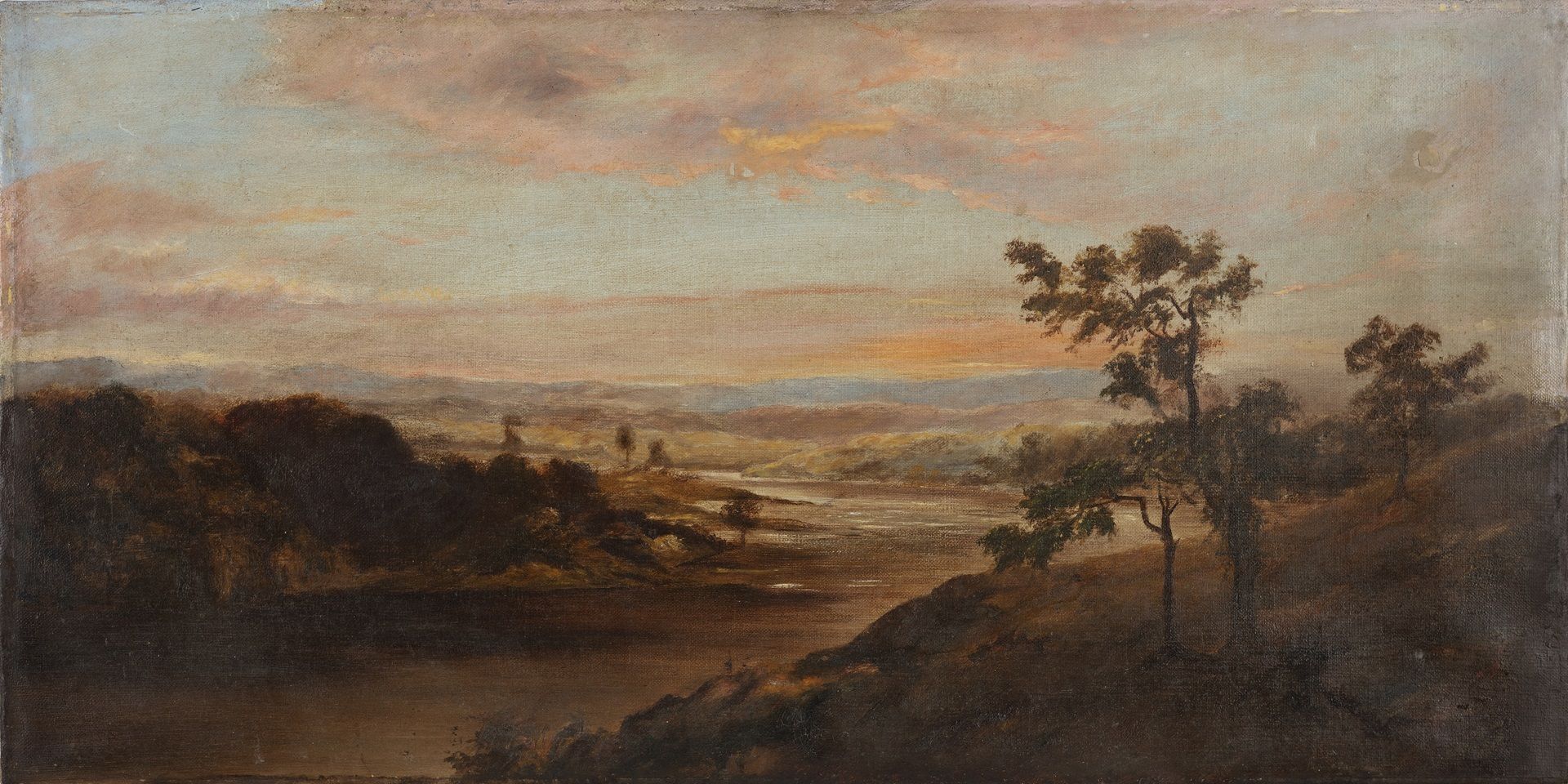Europe Before the War: Travelling with Ramendranath Chakravorty
Europe Before the War: Travelling with Ramendranath Chakravorty
Europe Before the War: Travelling with Ramendranath Chakravorty
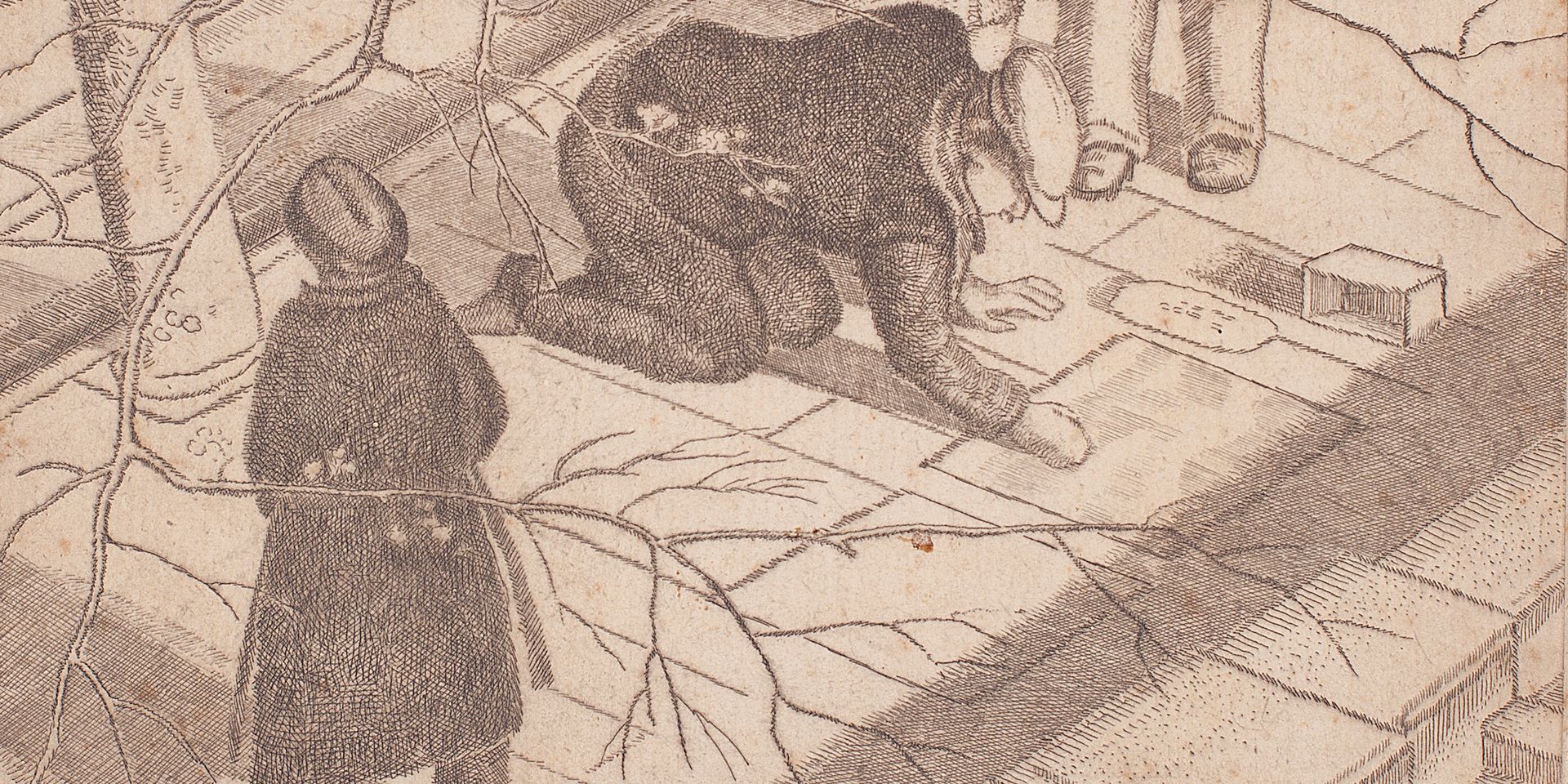
Ramendranath Chakravorty, Untitled (detail), 1938, Etching on newsprint paper, 10.7 X 7.0 in. Collection: DAG
'I see pictures merging before my mind’s eye—paths through the fields, river meadows, and mountain pastures mingling with images of destruction—and oddly enough, it is the latter, not the now entirely unreal idylls of my early childhood, that make me feel rather as if I were coming home…'
W. G. Sebald, On the Natural History of Destruction
As one leafs through the pages of the slim volume titled Sketches of Europe Before the War, streets, towns, and architecture comes to life through the skilled draughtsmanship of Ramendranath Chakravorty (1902-1955). Through twenty-seven images, Ramendranath Chakravorty takes us on a tour of Europe as he witnessed it while travelling through different cities in the late 1930s. Published in London at the height of the Second World War in 1944, the volume gives us a glimpse of Europe before the turmoil and violence that ensued, which would reduce many European, Asian and north African cities to ruin.

Ramendranath Chakravorty, Fishing Under Pont Neuf, Paris, 1939, Graphite on paper, 9.2 X 12.7 in. Collection: DAG
Walter Benjamin, writing about the newly built Paris of the late-nineteenth century, formulates a special kind of city ambler—the flâneur, who walks aimlessly through the streets, absorbing with hunger every detail of the shops, the people, the foliage and the street names he encounters. ‘The street conducts the flâneur into a vanished time’, he wrote.
This character of the flâneur artist is one that Ramendranath Chakravorty slips into with ease. His sketches of the streets of Paris and London, capture with immense dexterity, the details of quotidian life. Even in his drawing of the legendary Eiffel tower, its monumentality is foregrounded by the joyous celebration of everyday life in a scene of people ice skating with spectators milling about. The perspective in the sketches is from the level of the promeneur for the most part. A departure is marked by his view from a window in Paris, a perspective common to some of his sketches of Calcutta. A lot more detailed in nature, it is intriguing to ponder whether his Calcutta sketches depart from the gaze of the flaneur that comes across when he is sketching the center of the colonial empire rather than its periphery.
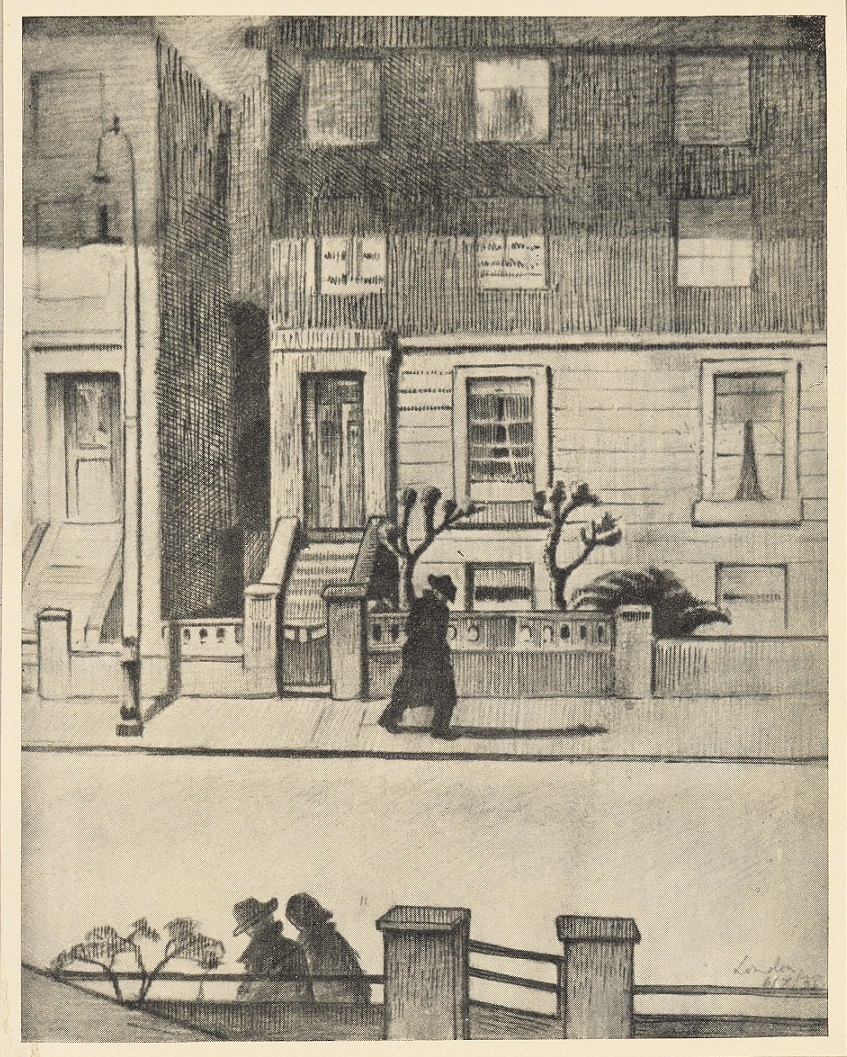
|
Ramendranath Chakravorty, Summer Midnight, London (Folio from the album Sketches of Europe, 1944), Offset print on paper, c. 1938-39, 5.5 x 4.3 in. Collection: DAG |
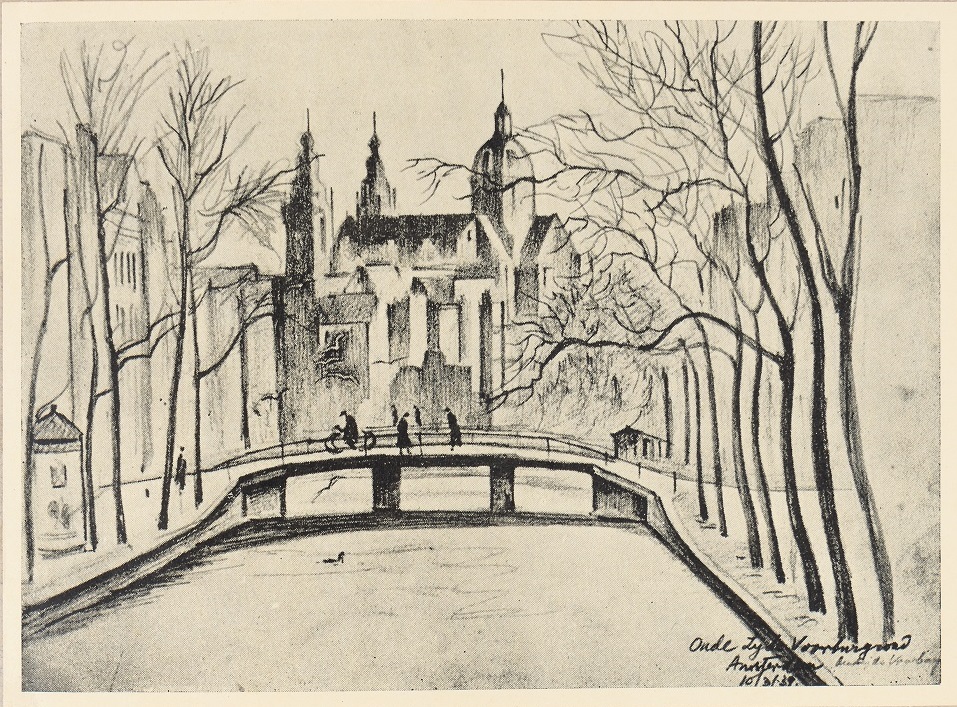
|
Ramendranath Chakravorty, An Old Church, Amsterdam (Folio from the album Sketches of Europe, 1944), Offset print on paper, c. 1938-39, 3.6 x 5.1 in. Collection: DAG |
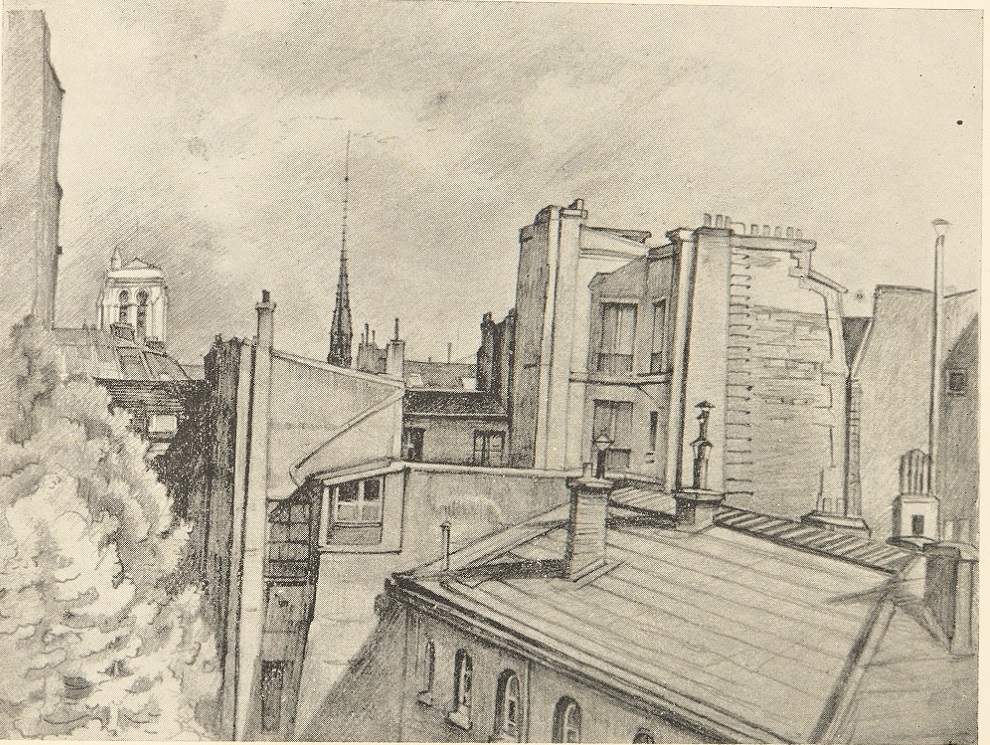
Ramendranath Chakravorty, Through My Window in Paris (Folio from the album Sketches of Europe, 1944), Offset print on paper, c. 1938-39, 4 x 5.2 in. Collection: DAG
Even when he is not portraying cityscapes, his landscapes are detailed and alive. Partly, perhaps, owing to a different tradition of the artist on the move. Ramendaranath writes about his teacher Nandalal Bose: ‘During the summer afternoons, I have often seen Nandababu, amidst dusty wind, drawn by an irresistible pull, walking along the vast stretches of khoai (parched earth), looking for the sources of his imaginations. I have noticed him; daily on his way back home he is watching everything around.’ This dedication to observing life around them in minute detail was typical not just for Nandalal but a common practice amongst hist students and contemporaries in Santiniketan. For Nandalal it was almost a social ritual to mark an encounter with space with the pleasantry of a sketch.

|
Ramendranath Chakravorty, Untitled (Folio from the album Sketches of Europe, 1944), Offset print on paper, c. 1938-39, 10 x 7.5 in. Collection: DAG |
Ramendranath spent several years of his formal education in Santiniketan from 1921, after moving there from the Government College of Art in Calcutta which he had joined in 1919. In 1937, he arrived in England to study at the Slade School of Art, London. He then travelled across Europe, spending a summer in the South of France and visiting various towns and cities in Holland, Switzerland and Italy, staying with numerous friends, and interacting with a wide network of artists and art connoisseurs.
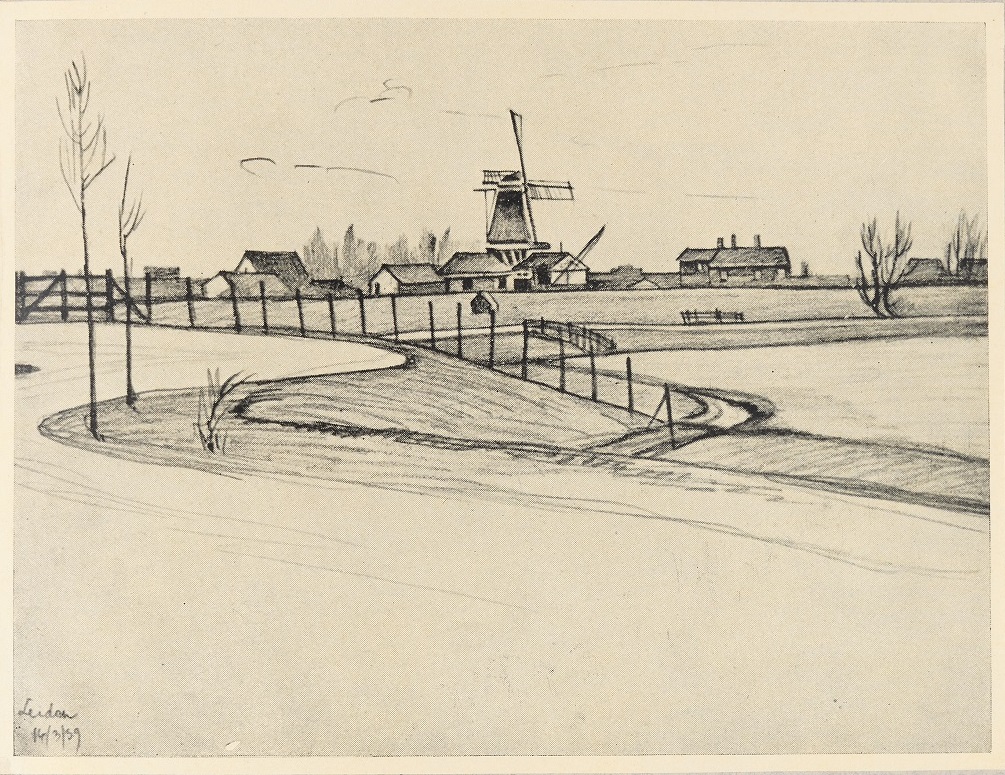
Ramendranath Chakravorty, A Village near Leiden (Folio from the album Sketches of Europe, 1944), Offset print on paper, c. 1938-39, 3.7 x 5.1 in. Collection: DAG
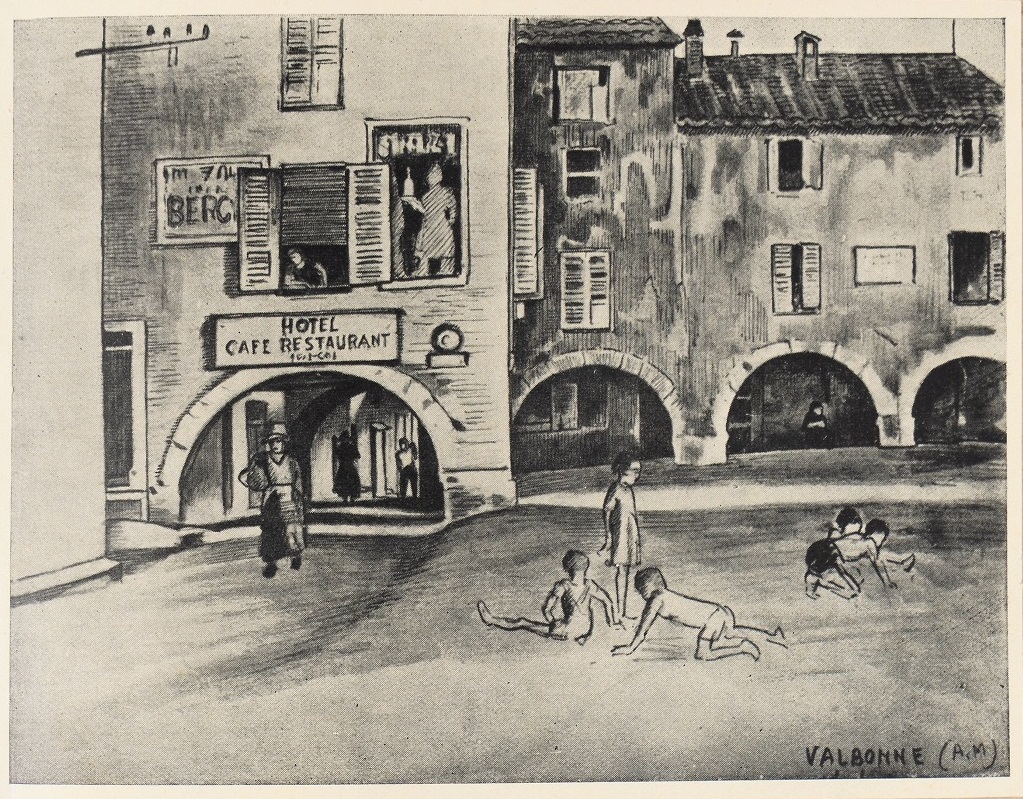
Ramendranath Chakravorty, Valbonne, Alpes Maritimes (Folio from the album Sketches of Europe, 1944), Offset print on paper, c. 1938-39, 4 x 5.4 in. Collection: DAG
It is perhaps in Santiniketan that the origin of this journey lies. Ramendranath gained exposure to a collection of wood-engravings and etchings by Scottish etcher Sir Muirhead Bone in the collection of William W. Pearson who taught at Santiniketan and was the secretary of Rabindranath Tagore. Chakravorty later trained in drypoint under Sir Bone, who receives a respectful and fond mention by him in the Preface of the book as the ’greatest English etcher, whose company and advice I shall never forget’. Sir Bone’s war drawings dating from the period of the First Great War in the 1910s may have served as an inspiration for this album as well.

|
Muirhead Bone, War Drawings by Muirhead Bone—Chateau near Brie on the Somme, 1918. Image courtesy: Wikimedia Commons |
It is also in Santiniketan that he met French artist Andres Karpeles who he stayed with for over a month in the alps Maritime in the South of France, drawing and sketching. Karpeles, in Santiniketan, had demonstrated various techniques in graphic art—a medium Ramendranath took to incredibly well and is perhaps best remembered for. In the Preface he also mentions learning etching from Willam Palmer Robins, who was later part of the project 'Recording Britain' ,which was a collection of topographical watercolours and drawings made in the early 1940s during the Second World War. He also mentions British sculptor, typeface designer, and printmaker Eric Gill from whom he learned wood engraving. When he was in London he also stayed with Leonard and Dorothy Elmhirst at Dartington Hall, where he had an exhibition of his works. While his travels across Europe turned out to be greatly educational, they were also a time of fertile creativity for him as evidenced by the quality of his sketching and drawings in this volume.

|
Ramendranath Chakravorty, Eiffel Tower (Folio from the album Sketches of Europe, 1944), Offset print on paper, c. 1938-39, 6.1 x 4.3 in. Collection: DAG |
From the tranquil joy his sketches exude and the warmth with which he writes the Preface, it is clear that Ramendranath looked back at his European travels with nostalgia and fondness for the places and the people he encountered. For Maie Casey, painter, writer, aviator, and wife of the Governor General of Bengal in 1944, the peace and nostalgia of the drawings are crucial as they serve as a much-needed reminder of beauty at a time of great strife. She writes, in the Foreword to this book, ’We need to think of [beauty], not as a luxury, but as a continuing part of the fabric of our lives and an inspiration without which we cannot endure’. In this slim volume, which is increasingly rare to find today, we discover a glimpse of Europe, delicately produced and preserved, as if in aspic, as one travelling artist from India remembers it before the second Great War and its destruction.
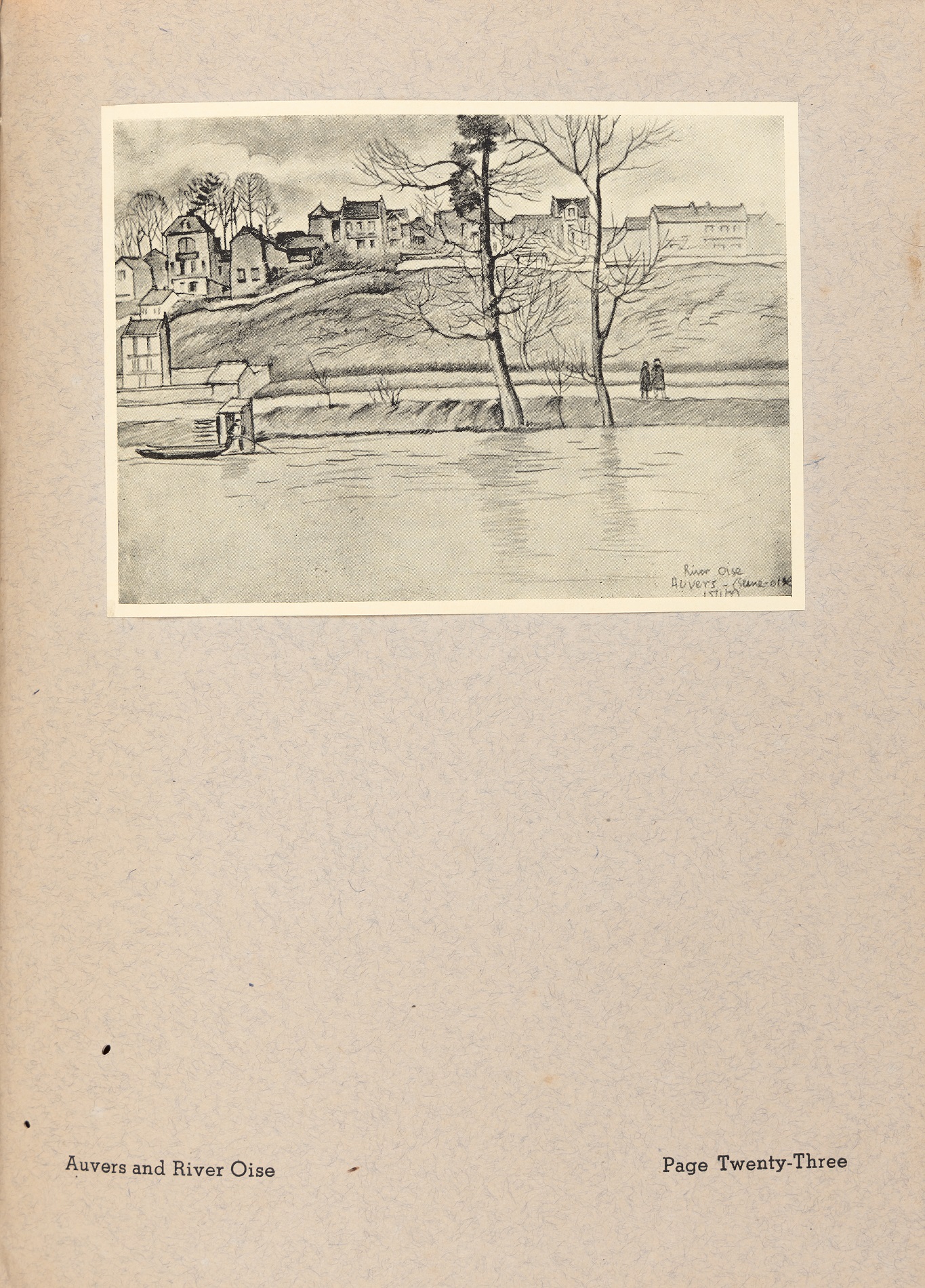
|
Ramendranath Chakravorty, Auvers and River Oise (Folio from the album Sketches of Europe, 1944), Offset print on paper, c. 1938-39, 3.6 x 5.1 in. Collection: DAG |

Ramendranath Chakravorty, Untitled, Aquatint and etching on paper, 5.7 x 13.7 in. Collection: DAG
Further Reading
Charles Baudelaire, The Painter of Modern Life, (Le Figaro), 1863
N. C. Bhattacharya, Modern Painters: R. N. Chakravorty, The March of India, March-April, 1950
Soumik Nandy Majumdar, Ramendranath Chakraborty: a pioneer in the modern Indian printmaking, Nandan: An Annual on Art and Aesthetics, Department of History of Art, Kala-Bhavana, 2009
Walter Benjamin, The Arcades Project, M The Flâneur, p.416-455
related articles

Essays on Art
Before the Chaos of Destruction: Jeram Patel's Iconic Works
Roobina Karode
February 01, 2023
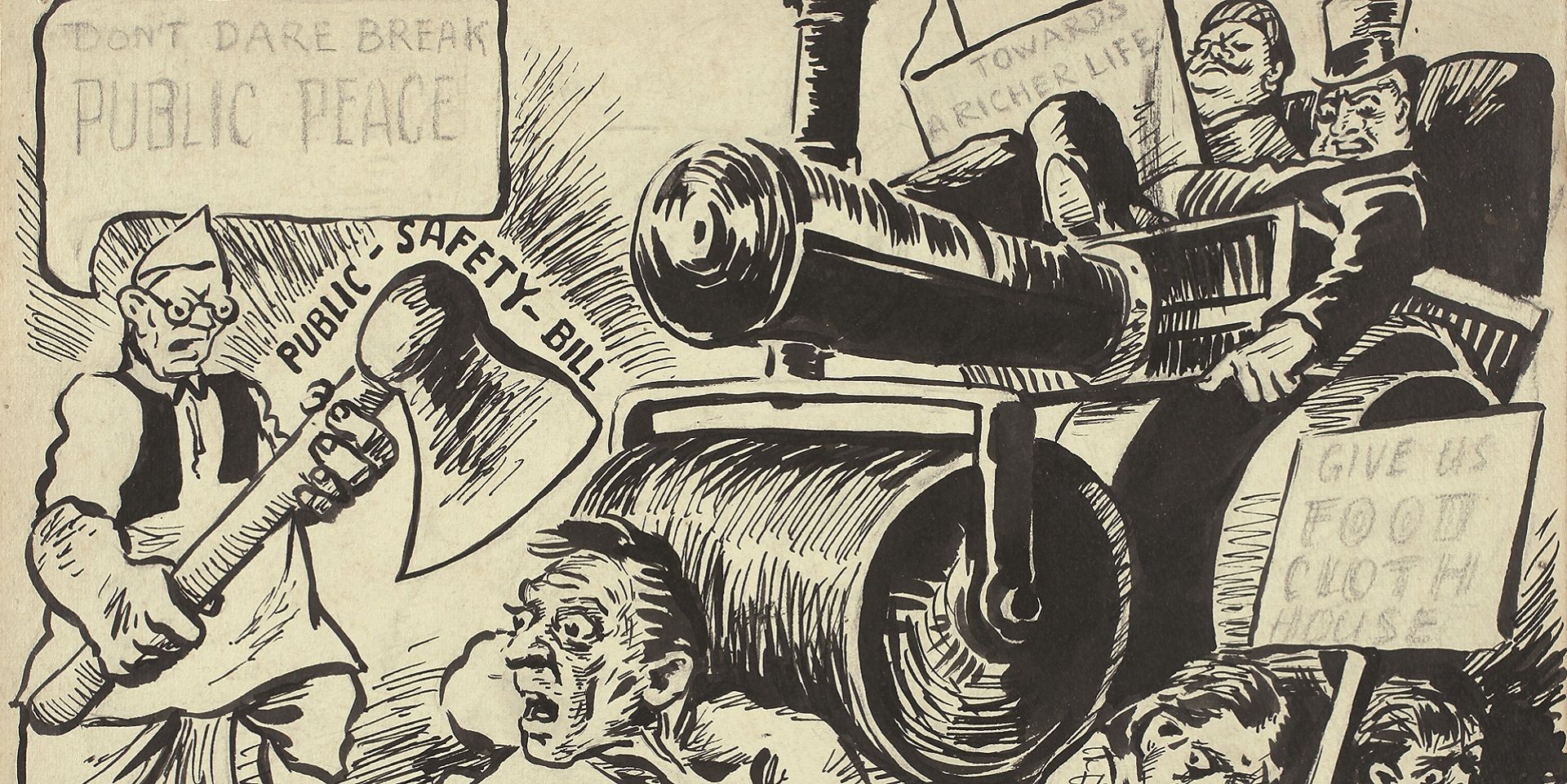
Essays on Art
To Hell with the State: Caricature in early (Post)colony
Sayandeb Chowdhury
June 01, 2023
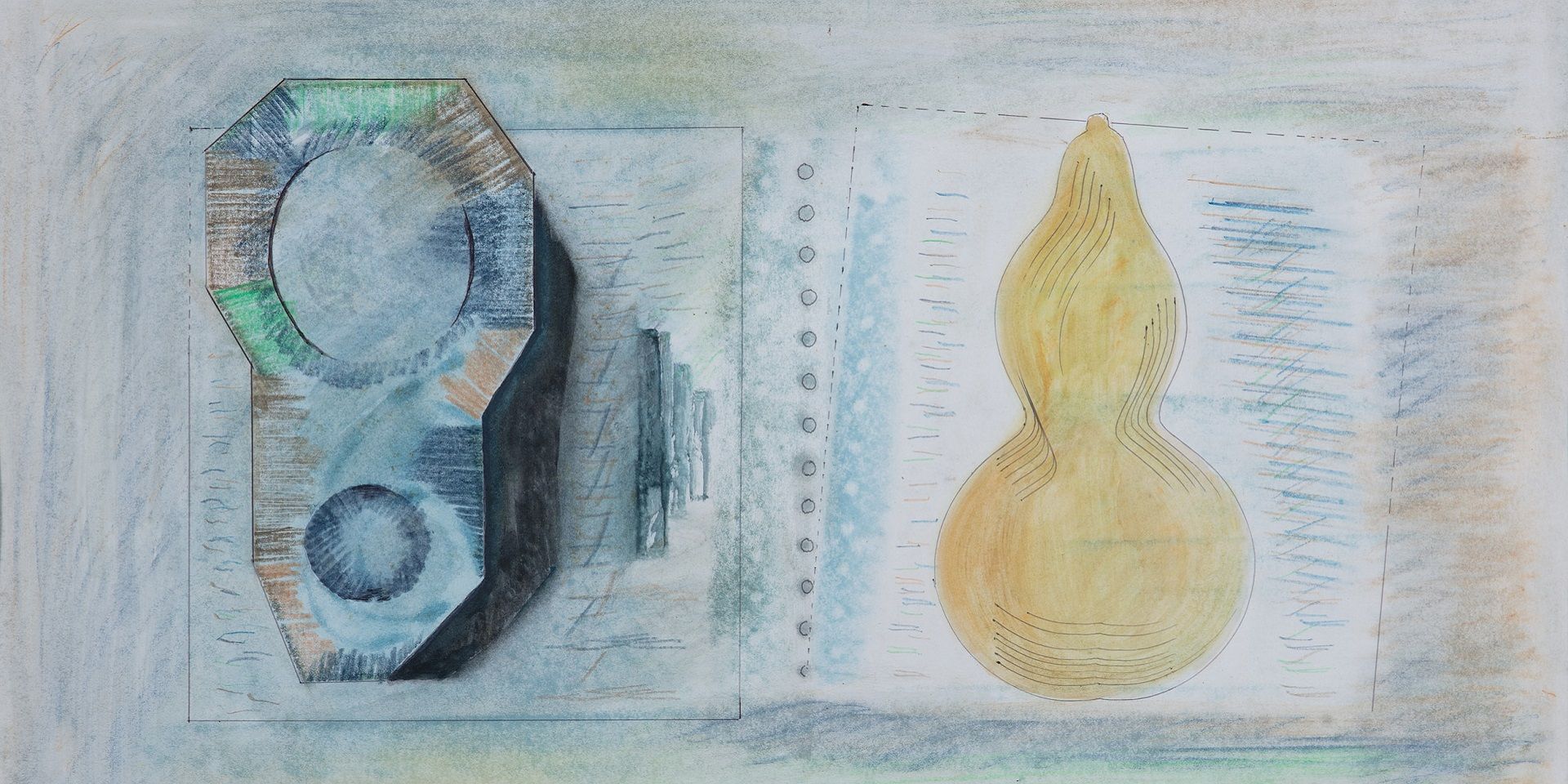
Essays on Art
Searching for the ‘Inner Form’ in Prabhakar Barwe’s Blank Canvas
Bhakti S. Hattarki
August 01, 2023
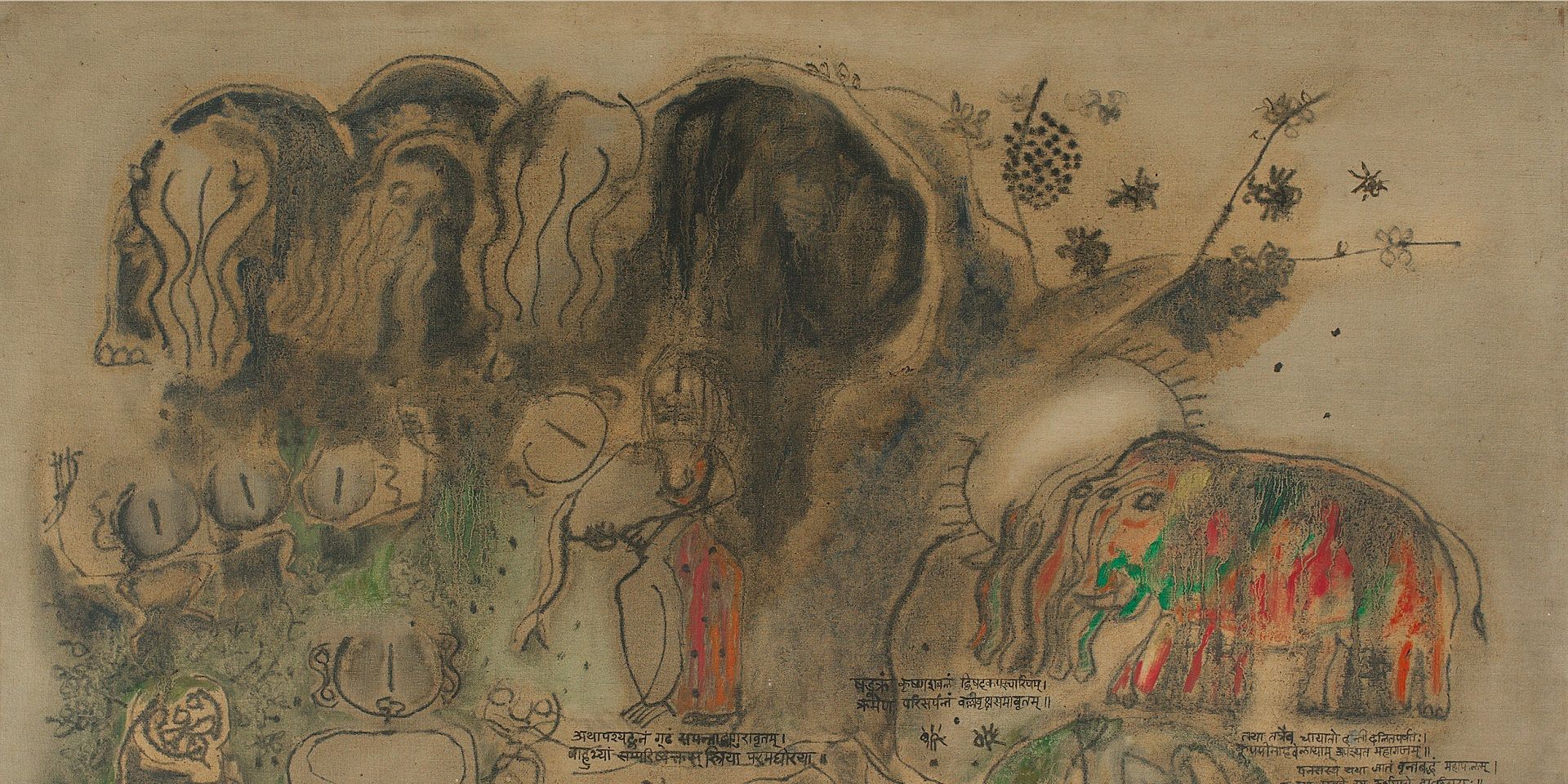
Archival Journeys
'The “livingness” of the past’: M. Reddeppa Naidu's mythologies
Shaon Basu
July 01, 2024
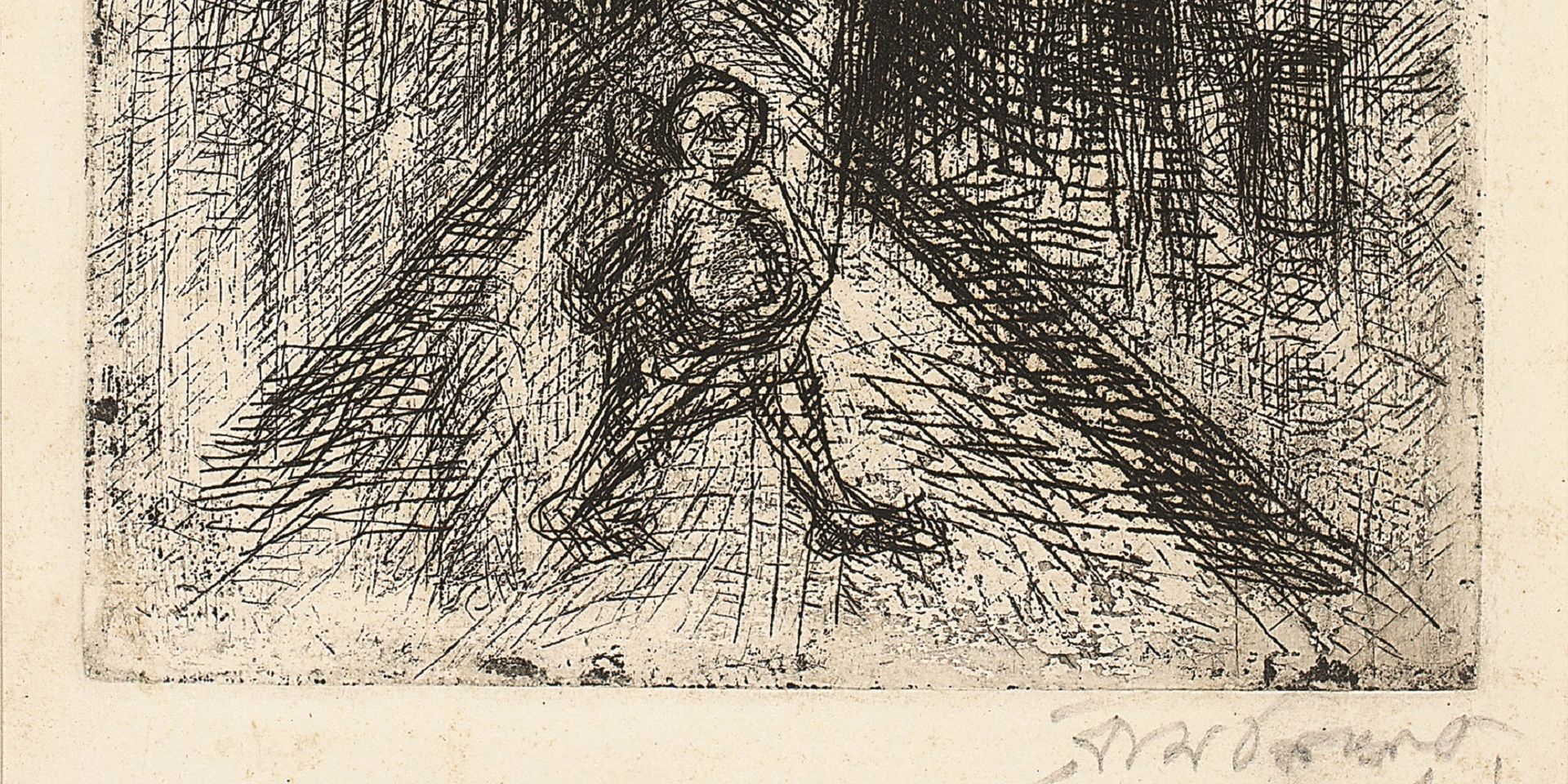
Essays on Art
On 'Not Looking Back': Samaresh Basu meets Ramkinkar Baij
Debotri Ghosh
August 01, 2024
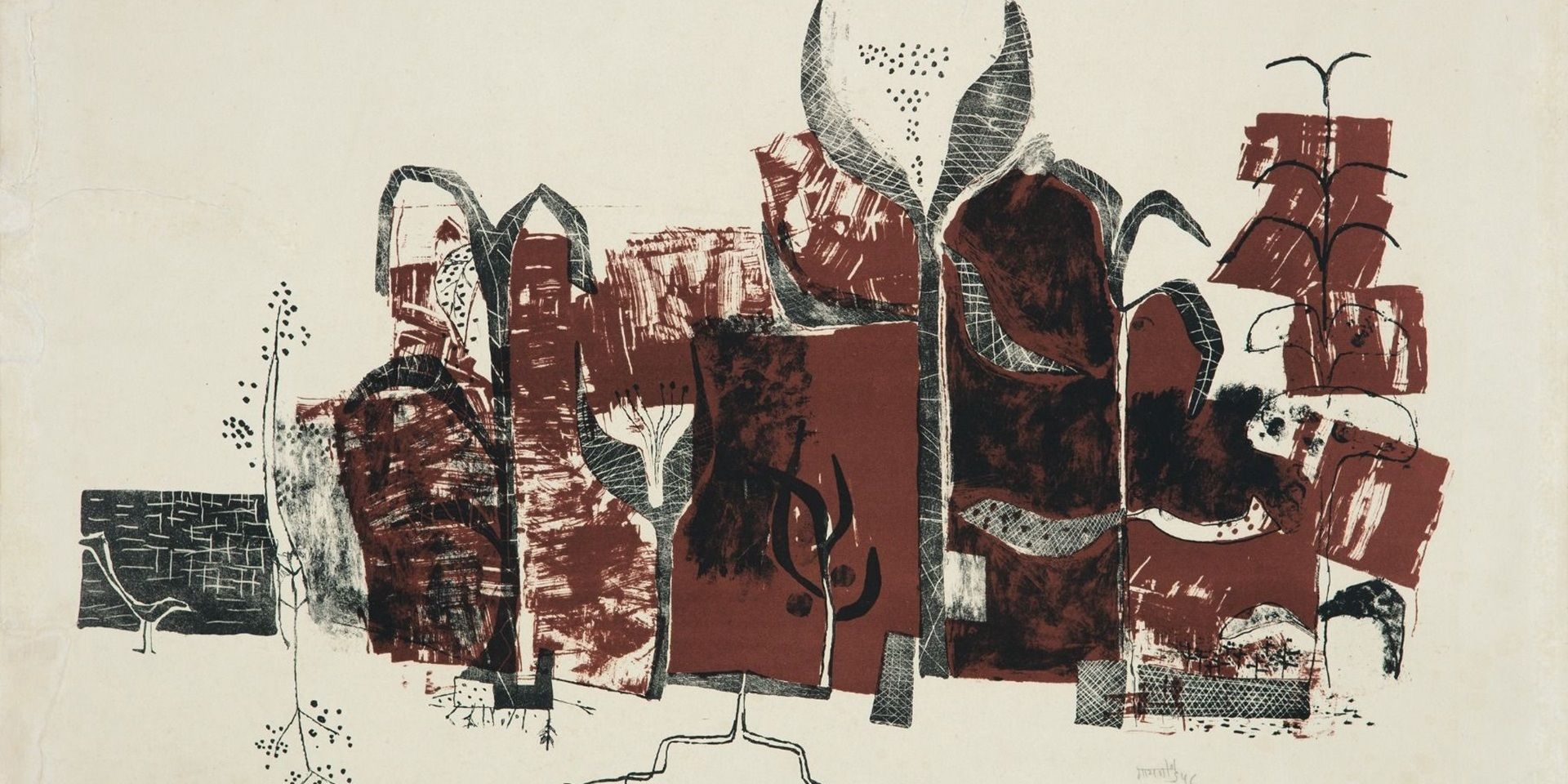
Essays on Art
V. S. Gaitonde’s Century: Celebrating a Master Abstractionist
The Editorial Team
August 01, 2024

Erotics of the Foreign: On Bhupen Khakhar's 'Phoren Soap'
Bhakti S. Hattarki and Ankan Kazi
September 01, 2024

Essays on Art
Peripheries and the Center: Souza and Avinash Chandra in London
Shreeja Sen
December 01, 2024



